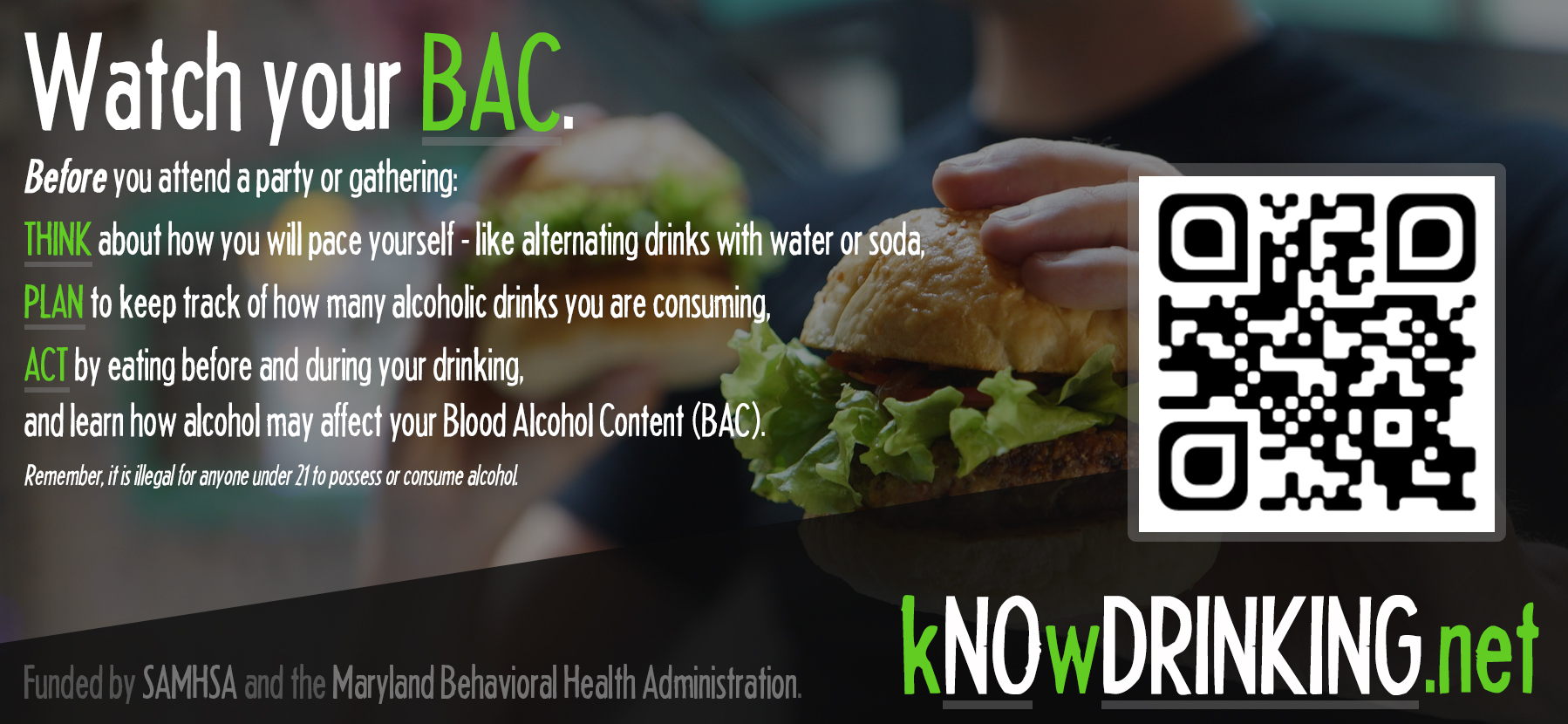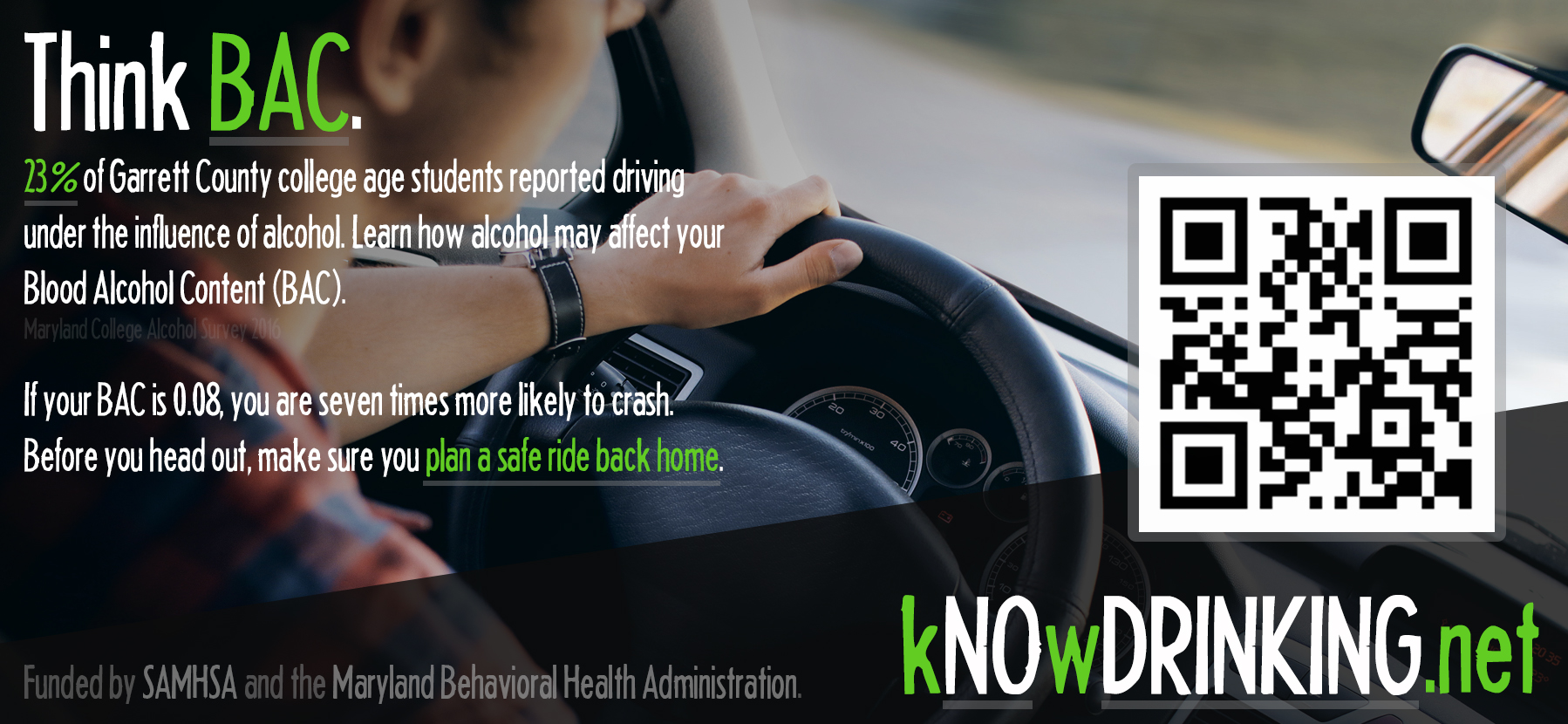#Tools
Get in the kNOw.Online Community Event Toolkit to Prevent Binge Drinking in Garrett County
Managing alcohol consumption is a major part of the event organizing that must be planned well in advance of the event itself. Public events may unintentionally support and encourage heavy use of alcohol. With beer tents, signage and sponsorships, alcohol can easily overshadow the purpose of these events and become the main attraction.
This toolkit consists of research-based best practices. It will assist community event planners with safety suggestions that will better ensure a positive community festival and event experience as well as help to reduce over-consumption.
Community event planners who implement these best practices send the message that underage drinking and over-consumption are not acceptable or consistent with the values and practices for a safe and responsible environment to promote enjoyable community and family events.
Implementing these practices and developing procedures for responsible service may help to reduce the event’s liquor liability insurance rates.
We encourage event planners to implement these best practices as your time and resources permit. If you have any questions, please contact Brenda Sisler, Garrett County Health Department at 301-334-7730 ext. 6534 or the Garrett County Liquor Control Board, Debbe Owston at 301-334-1925.
To encourage a safe environment for all event attendees, consider the following practices:
- Use an event planner checklist (Appendix A)
- Collaborate with law enforcement and emergency personnel regarding alcohol policies
- Hire adequate security to monitor alcohol consumption (Contact law enforcement or security agency for guidance)
- Ensure pedestrian safety and adequate parking for attendees
- Have designated entrances and exits with fenced-in community event grounds
- Provide radio communication between serving stations and event coordinators and law enforcement
- Post signage at entrance/exit areas so event attendees are aware of the event policies/ practices such as “No Carry-ins” or “BYOB is prohibited.”
- Ensure access to restrooms, ticket booths, and games without having to go through or next to alcohol serving area
- Monitor community event grounds, parking lots, and surrounding properties for suspicious activities
- Have adequate lighting for all event areas, especially entrances and exits, walkways, parking areas and service roads
- Post warning signs to discourage drinking and driving and include designated non-drinking drivers.
- Enclose the alcohol sales and consumption area: Restrict alcohol sales to a designated location where underage patrons are not allowed
- Use clear, plastic, distinguishable containers for alcoholic beverages, and serve soda and water in original bottles
- Encourage alcohol license holders to have liability insurance (General liability does not include liquor liability)
- Develop written, consistent procedures for handling anyone who appears to be intoxicated, including absolutely no sales to intoxicated individuals
For youth, family, and community-focused events, consider the following practices:
- Post alcohol advertising at or above 36” from the ground
- Provide a designated area for alcohol sales away from all family and youth-oriented activities
- Keep child event areas alcohol-free and post signage “Alcohol Free Zone” or “Alcohol Prohibited Beyond this Point”
- Restrict or prohibit an alcohol industry name from being associated with or displayed at the event
- Reduce or avoid using alcohol logos on ads in partnership with community events
- Sell alcohol in a separate line from food and non-alcoholic beverages
- Sell only non-alcoholic beverages at youth-oriented events (ex: children’s holiday event, youth athletics)
- Have alcohol-free events or days/nights where no alcohol is served or permitted
Preventing Underage Drinking
- Restrict alcohol sales to a designated location where underage patrons are not allowed
- Check identification for all customers who plan to purchase or possess alcohol and use wristbands to identify people who are 21 and older (ID’s are checked on all adults for consistency)
- Post signage regarding the purchase, possession and consumption of alcohol policies
- Have ID verification area separate from alcohol sales vendors, including applying wristbands
- Deny service to anyone under the age of 21, even when accompanied by a parent, guardian, or spouse of legal drinking age and post signage in alcohol areas regarding this practice
- Use clear, plastic, distinguishable containers for alcoholic beverages, and serve soda and water in original bottles
Practices and policies to consider:
- Check identification for all customers who plan to purchase or possess alcohol and use wristbands to identify people who are 21 and older.
- A volunteer at the entrance gate will apply wristbands after age has been verified by security person.
- Have an ID checking guide and incident reporting forms at every ID checking table and every server table.
- Signage– Place visible signs announcing the following alcohol policies/procedures:
- We ID all adults appearing to be under the age of 30.
- Must be born on or before ‘date & year’ in order to purchase, consume, or possess alcohol.
- Wristbands are required to purchase or posses alcohol.
- Intoxicated persons will not be served.
- “Alcohol Free Zones” or “Alcohol Prohibited Beyond this Point.”
- Patrons will not be allowed to serve themselves.
- Require all servers to be at least 21 years old.
- Post all signs for servers in a visible location.
- Make sure all staff and volunteers have reviewed the policy manual which includes step by step instructions on what to do if a patron becomes intoxicated.
- Have a plan to ensure that intoxicated patrons can be taken home safety.
- A limit of 1 to 2 beers at a time per person will be served.
- Alcoholic beverages will be served in clear 12 oz. plastic distinguishable cups and soda and water in original bottles.
- Ensure that one or more servers have experience and training – they should be able to identify the physical signs of intoxication and understand that they could be held civilly liable.
- Have a standardized system for logging intoxication incidents.
- Staff and volunteers will not be allowed to drink 2 hours before and or during the event.
- Foods, especially high-protein and low salt foods, will be available before and during hours that alcohol is served.
- Provide water at all times.
- Announcements regarding drinking responsibly and not drinking and driving will be made whenever possible during the event.
- Restrict or prohibit an alcohol industry name from being associated with or displayed at the event.
Practices that decrease binge drinking and intoxication are the following:
- Limit the number of alcoholic beverages that can be purchased at one time.
- Avoid drink promotions, such as “2 for 1”, “all you can drink” or happy hour”.
- Price non-alcoholic drinks less than alcoholic drinks.
- Require all servers to be at least 21 years old.
- Patrons will not be allowed to serve themselves.
- Provide water at all times.
- Limit the hours of alcohol consumption (example: not before 12 pm) and discontinue alcohol consumption 1 hour before the end of the event.
- Eliminate drinking games or contests, and do not provide alcoholic beverages as prizes.
- Announcements regarding drinking responsibly and not drinking and driving will be made whenever possible during the event.
- Make sure all staff or volunteers have reviewed the policy manual which includes step by step instructions on what to do if a patron becomes intoxicated and have a standardized system for logging these incidents.
- Be courteous, discreet, and tactful when ceasing alcohol service to intoxicated individuals.
- Post signage “Intoxicated persons will not be served” in a visible location.
- Ensure that servers have experience and
training—they should be able to identify the physical signs of intoxication listed below and understand that they could be held civilly liable.
Behavioral cues of intoxication:
- Changes of inhibition or notable changes in
behavior, becoming loud and/or talkative, or exhibiting mood swings. - Changes in signs of poor judgement,
inappropriate behavior, gestures, language
or becoming overly friendly. - Changes in reaction, unfocused eyes, slurred or slowed speech or losing train of thought.
- Changes in coordination, stumbling, dropping belongings or difficulty picking up items.



